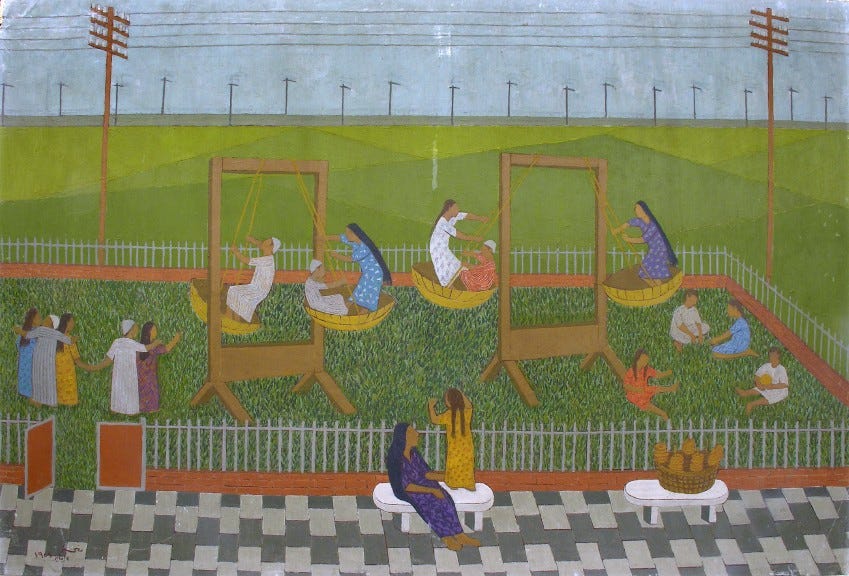A Mother's Love
On Arab Mothers Day, I look back on Menhat Helmy's relationship with her daughters, Nihal and Sara, as well as her grandchildren.
The Art of Menhat Helmy is a media platform supported by its readers and managed solely by the artist's family. Our goal is to persist in showcasing Helmy's groundbreaking artwork and to inspire emerging Arab artists.
If you haven't already, we encourage you to consider becoming a paid subscriber.
In 1958—three years after concluding her studies at the Slade School for Fine Arts in London—Menhat Helmy became pregnant with her first child—a daughter she would name Nihal.
With feelings of motherhood kindling within her, the artist used the figurative style that characterized her paintings at the time to create a fully realized playground with 15 children populating the canvas. Some played on swings while others busied themselves with games and other activities.
There is a sense of pure joy emanating from the painting—an innocence that could only be embodied by children.
The painting, titled “The Playground (1959),” continues to occupy a prominent place in the living room of our family home, a reminder of my grandmother’s breathtaking work and the role that motherhood played in her life and legacy.
In contrast to several of her peers such as Gazbia Sirry, Tahia Halim, and Inji Efflatoun, Helmy stood out as a female artist who successfully managed the balancing act of being both a trailblazing artist and printmaker, while also fulfilling her role as a mother to two daughters.
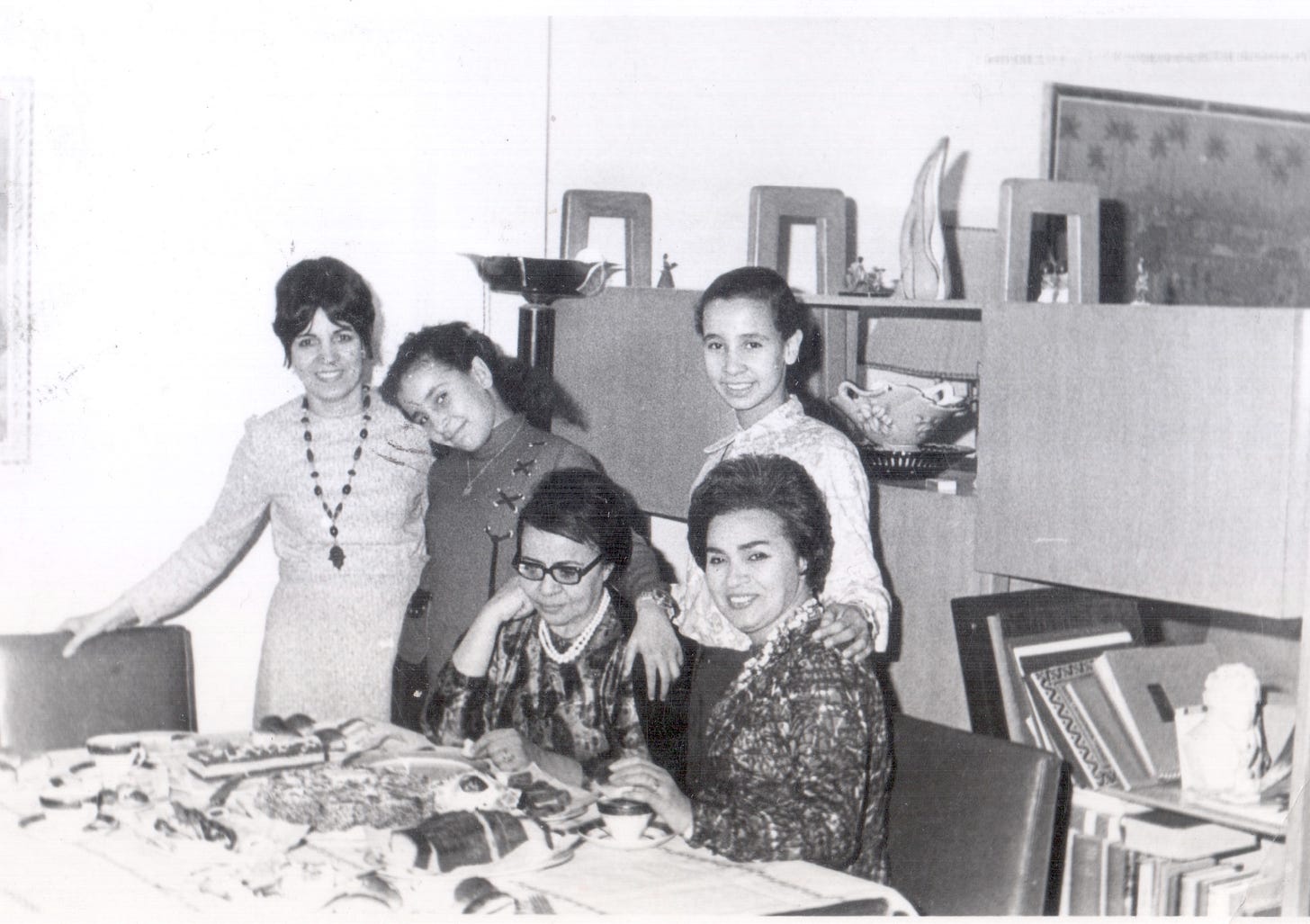
Unlike her sister and fellow artist Re’aya Helmy, who gave up her career to raise her children, Helmy continued to create new works and present at exhibitions and international printmaking biennales throughout the 1960s and 70s. She held her first solo exhibition in 1966, when her youngest daughter Sara was five years old. An etching of The Playground was among the 55 works exhibited at the time.
In 1972, Helmy relocated back to London after her husband, Abdelghaffar Khallaf, became the medical attaché for the Egyptian embassy in the United Kingdom. The couple travelled with their two daughters and settled in Richmond. Helmy enrolled part-time at Morley College, an adult education college where she continued to study printmaking, mainly intaglio.
Helmy and her family remained in London until 1979, during which time the artist gradually merged her newfound affection for abstraction with her love of printmaking — a combination that cemented Helmy’s place as an Egyptian pioneer.
As I underwent the process of digitizing my grandmother’s archive a few years ago, I uncovered a treasure trove of letters and cards that detailed the correspondences between my grandmother and her two daughters, Nihal, as well as my mother Sara. The letters, which were mainly exchanged in the late 70s when her children had graduated from school and were studying abroad, seemed to burst with love and affection—a testament to their extraordinary bond.
There were also birthday cards and Mothers Day cards buried within my grandmother’s archive.
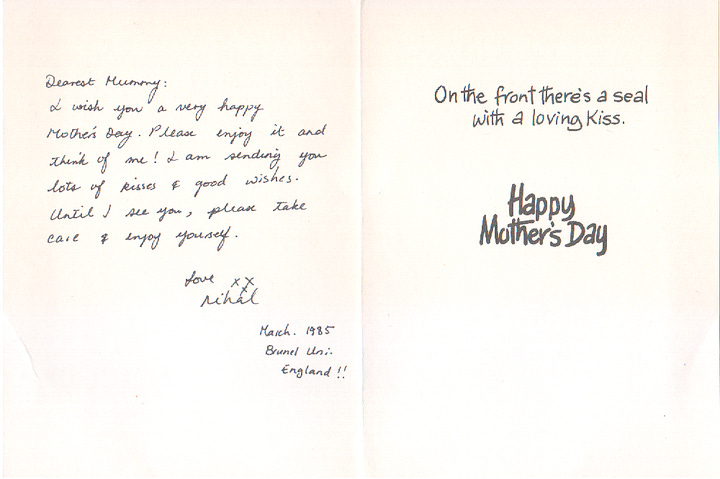
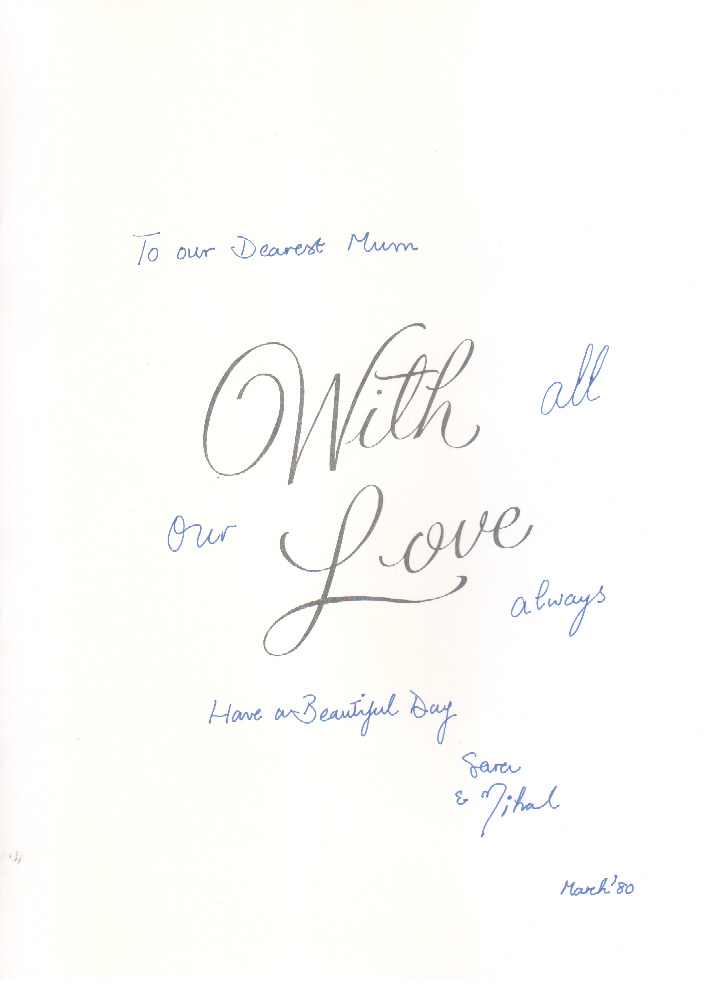
When Menhat Helmy returned to Egypt in 1979, she purchased a printmaking press and a studio space that she planned to use for years to come. Then, her career came to an unexpected end. Helmy’s lungs began to suffer after years of inhaling fumes from the printmaking process. Then, in 1988, her husband of more than thirty years passed away.
Torn from the partner she cherished and deprived of the art that brought her the most joy, Helmy decided to retire. Her final print is dated 1984.
By the time I was born in 1991, Helmy, deprived of her creative outlet, absorbed herself in the role of grandmother. I remember her helping me build Lego sets, finish jigsaw puzzles, and answering my endless questions as we watched TV.
Every now and then, I would ask her questions about her work: Why are those people naked? Why do those people not have faces? Why did you make this in black-and-white? Despite my never-ending childish curiosity, my grandmother never lost her patience, carefully explaining herself in the calm, soothing voice I can still recall.
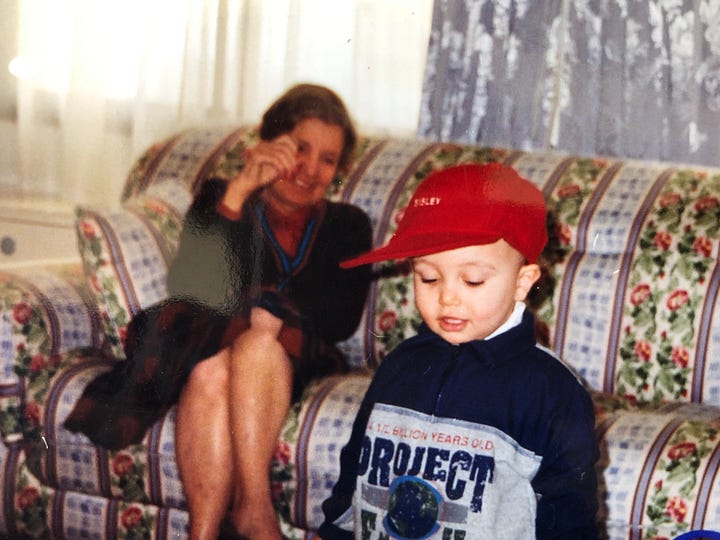
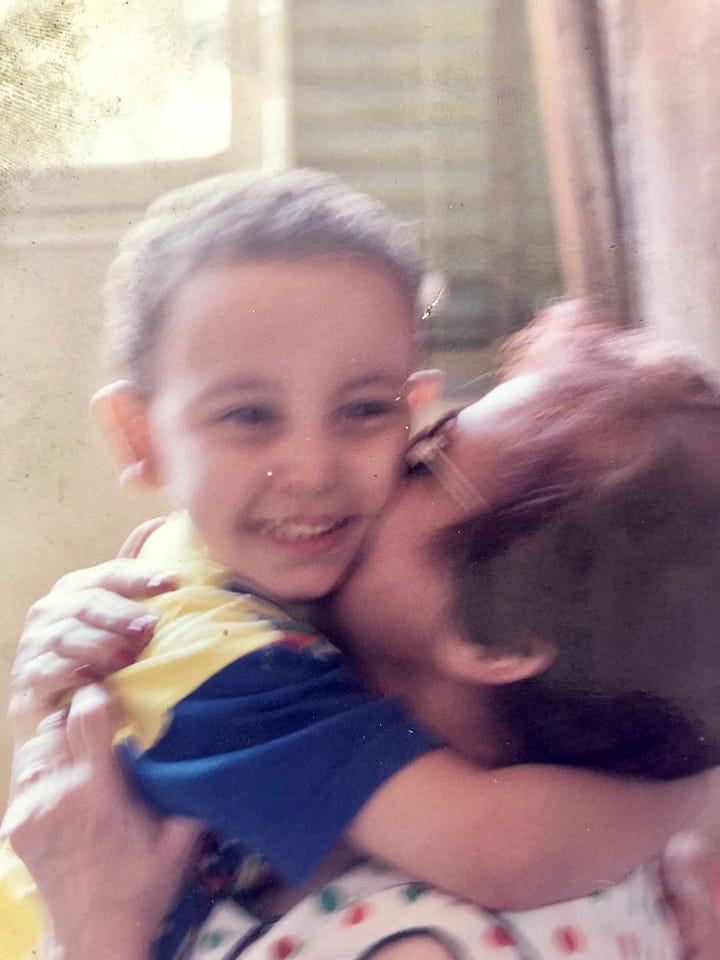
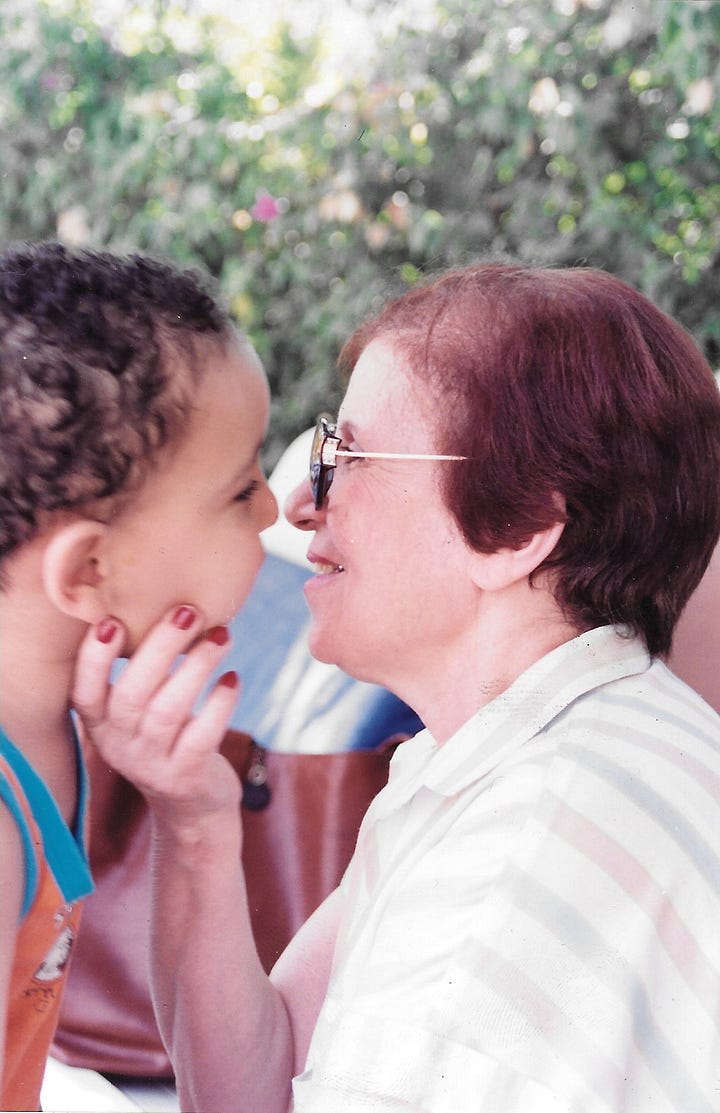
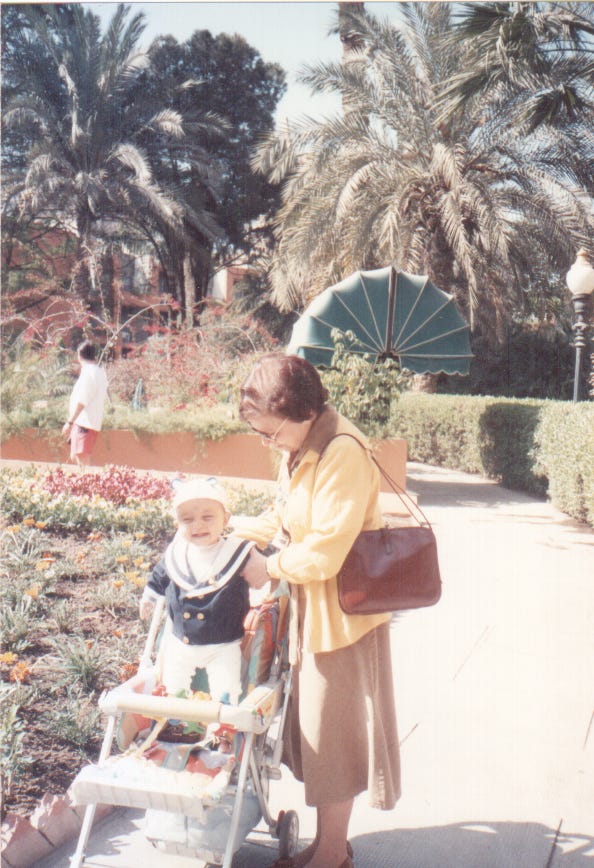
Though Helmy’s career was cut short by illness, she continued to live her life by the same principles that characterized her geometric works—a penchant for precision, a deep sense of curiosity, and a self-sufficiency that remained steadfast until she departed from our world. I will remember her not just as my grandmother and a role model for my life, but also as a pioneering Egyptian artist who distinguished herself during an extraordinary era in our country’s history.
Happy Mothers Day.
The Art of Menhat Helmy is a media platform supported by its readers and managed solely by the artist's family. Our goal is to persist in showcasing Helmy's groundbreaking artwork and to inspire emerging Arab artists.
If you haven't already, we encourage you to consider becoming a paid subscriber.



